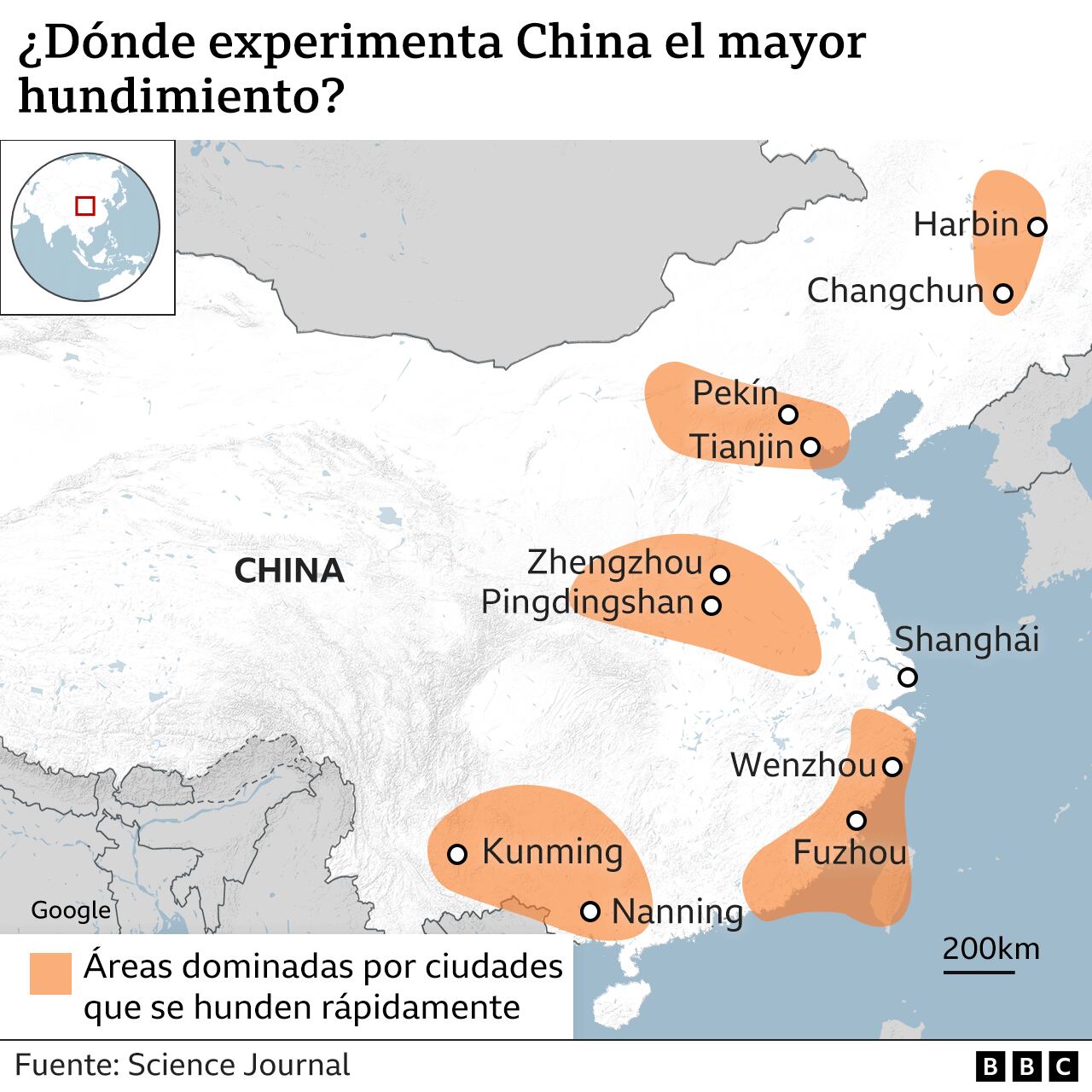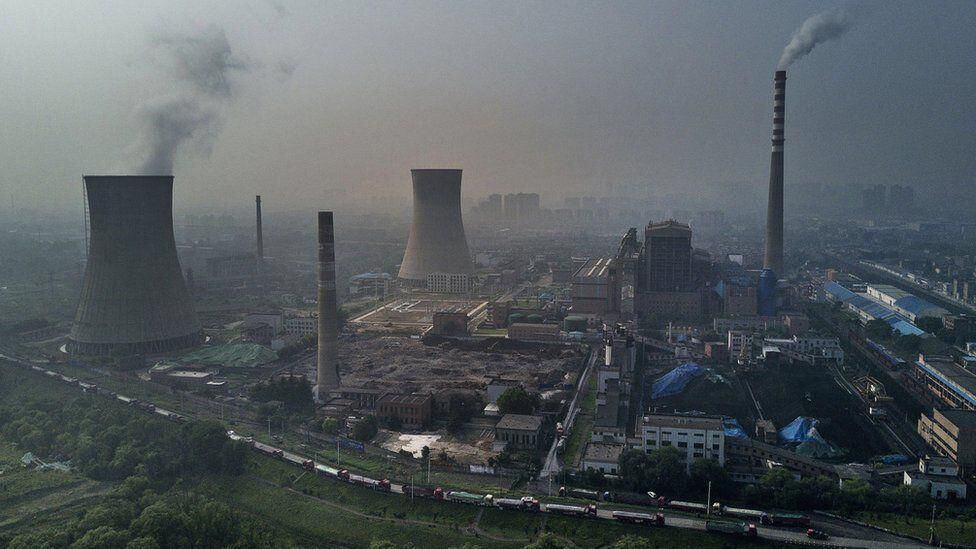Almost half of the main cities in the China They are sinking due to water extraction and the increasing weight of their rapid expansion, researchers say.
Some cities are sinking quickly: one in six exceeds 10 mm per year.
LOOK: “I couldn’t protect my girl. I just wanted to give her a decent life”: the father who saw his daughter suffocate while trying to reach the UK
China’s rapid urbanization in recent decades means that much more water is being extracted to meet the population’s needs, scientists say.
In coastal cities, this shipwreck threatens millions of people with floods as sea level rises.
China has a long history of dealing with land subsidence, and both Shanghai and Tianjin showed evidence that they were sinking in the 1990s. 1920.
In the last century this city sank more than 3 meters.
In more modern times, the country records widespread evidence of subsidence in many of the cities that have expanded rapidly in recent decades.
82 cities under the magnifying glass
To understand the magnitude of the problem, a team of researchers from several Chinese universities examined 82 cities, all with a population of more than 2 million inhabitants.
Researchers used satellite data Sentinel-1 to measure the Earth’s vertical movements across the country.
By analyzing the period between 2015 and 2022, the team was able to determine that the 45% of urban areas sink more than 3 mm per year.
Around 16% of urban land is sinking at a rate of more than 10mm per year, which scientists describe as a rapid decline.
In other words, it means that 67 million people live in areas that are sinking rapidly.
Researchers say the cities facing the worst problems are concentrated in five regions highlighted on the map below.

The magnitude of the decline is influenced by a number of factors, including geology it’s him weight of buildings.
But an important element, according to the authors, is the loss of groundwater.
Basically, this means extracting water from under or near cities for use by the local population.
This has already been observed in several large urban areas around the world, such as Houston, Mexico City and DelhiHey.
In China, the research team was able to associate the withdrawal of water from more than 1,600 monitoring wells with increasing levels of subsidence.
“I think water extraction is, in my opinion, probably the dominant reason,” says Professor Robert Nicholls of the University of East Anglia in the UK, who was not involved in the research.
“In China there are many people who live in areas whose sediments, from a geological point of view, were deposited recently. So when you extract groundwater or drain the ground, it tends to sink.”
Transport and mining
Other factors that are influencing include the urban transport and the extraction of minerals and coal.
In the northern region of Pingdingshan, one of the country’s largest coal deposits, the land is sinking at an extremely rapid rate of 109 mm per year.
The study authors state that a major threat in the future is the exposure of urban populations to flooding, due to a combination of subsidence and sea level rise caused by climate change.
In 2020, about 6% of China had a relative elevation below sea level. Within 100 years, this number could rise to 26% of the country in a scenario of medium to high carbon emissions.

Researchers say the land is sinking faster than sea levels are rising, but together they would put hundreds of millions of people at risk of flooding.
However, studies show that there are effective strategies that can combat the phenomenon.
Subsidence problems have affected other major urban centers in Asia in the past, including Osaka and Tokyo, Japan.
“Tokyo sank near the port area, up to five meters in the 20th century,” explains Professor Nicholls.
“But in the 1970s, they used good water pipes from other areas and they also had a law that said well water would not be usedand this essentially prevented the sinking.”
The study was published in the journal Science.
Source: Elcomercio
I am Jack Morton and I work in 24 News Recorder. I mostly cover world news and I have also authored 24 news recorder. I find this work highly interesting and it allows me to keep up with current events happening around the world.

:quality(75)/cloudfront-us-east-1.images.arcpublishing.com/elcomercio/LOHAFFPLLNFV3PNGDC6CR7VM2Y.jpg)


:quality(75)/cloudfront-us-east-1.images.arcpublishing.com/elcomercio/OHTHAOCO5VEM5LJJODLZJ37DRI.jpg)
:quality(75)/cloudfront-us-east-1.images.arcpublishing.com/elcomercio/6BBWTXNL55HNLNNSGBLYCTT6TI.jpeg)
:quality(75)/cloudfront-us-east-1.images.arcpublishing.com/elcomercio/NPIXP45VUZGRTGKCZA3MCQXYWQ.jpg)
